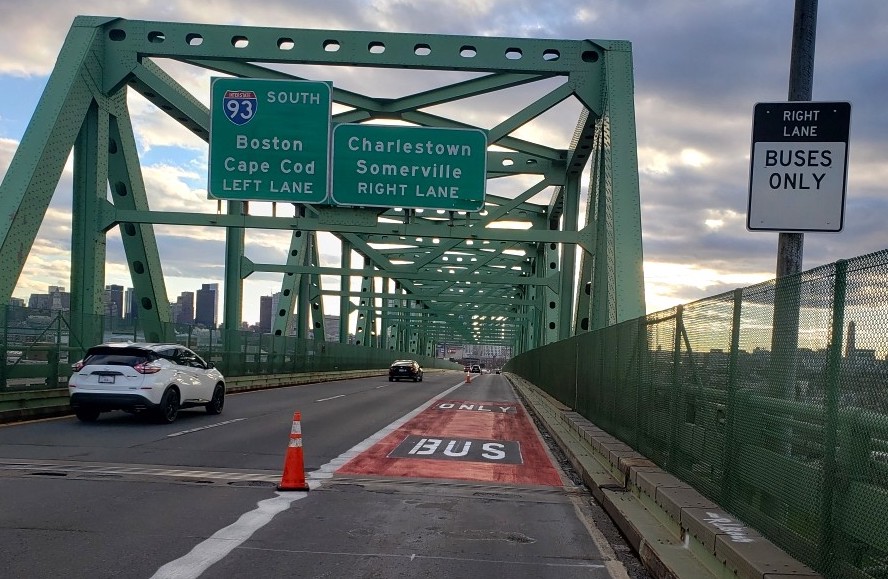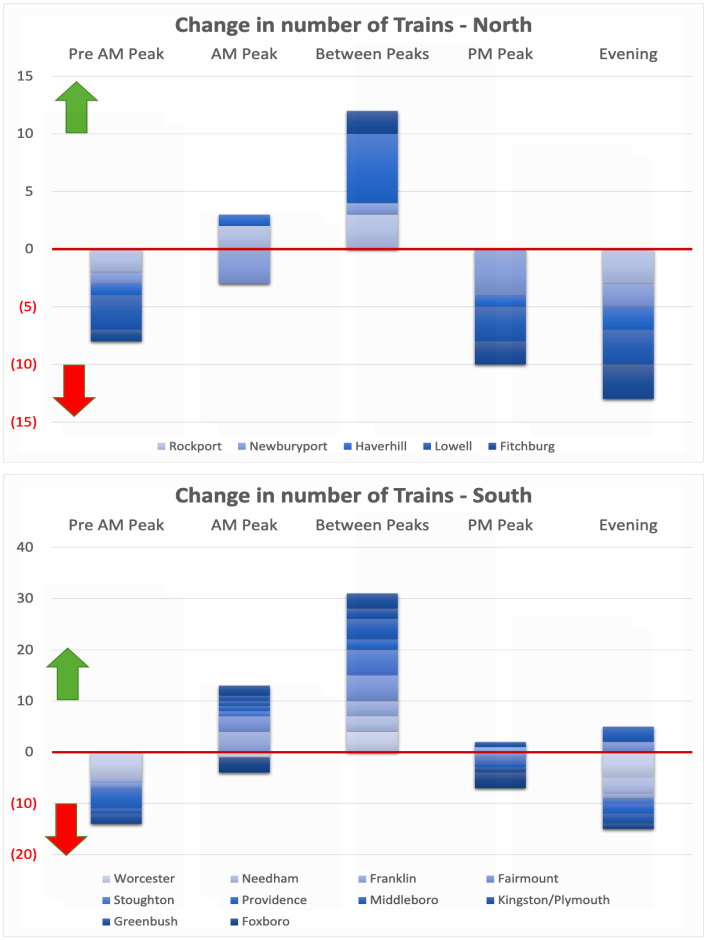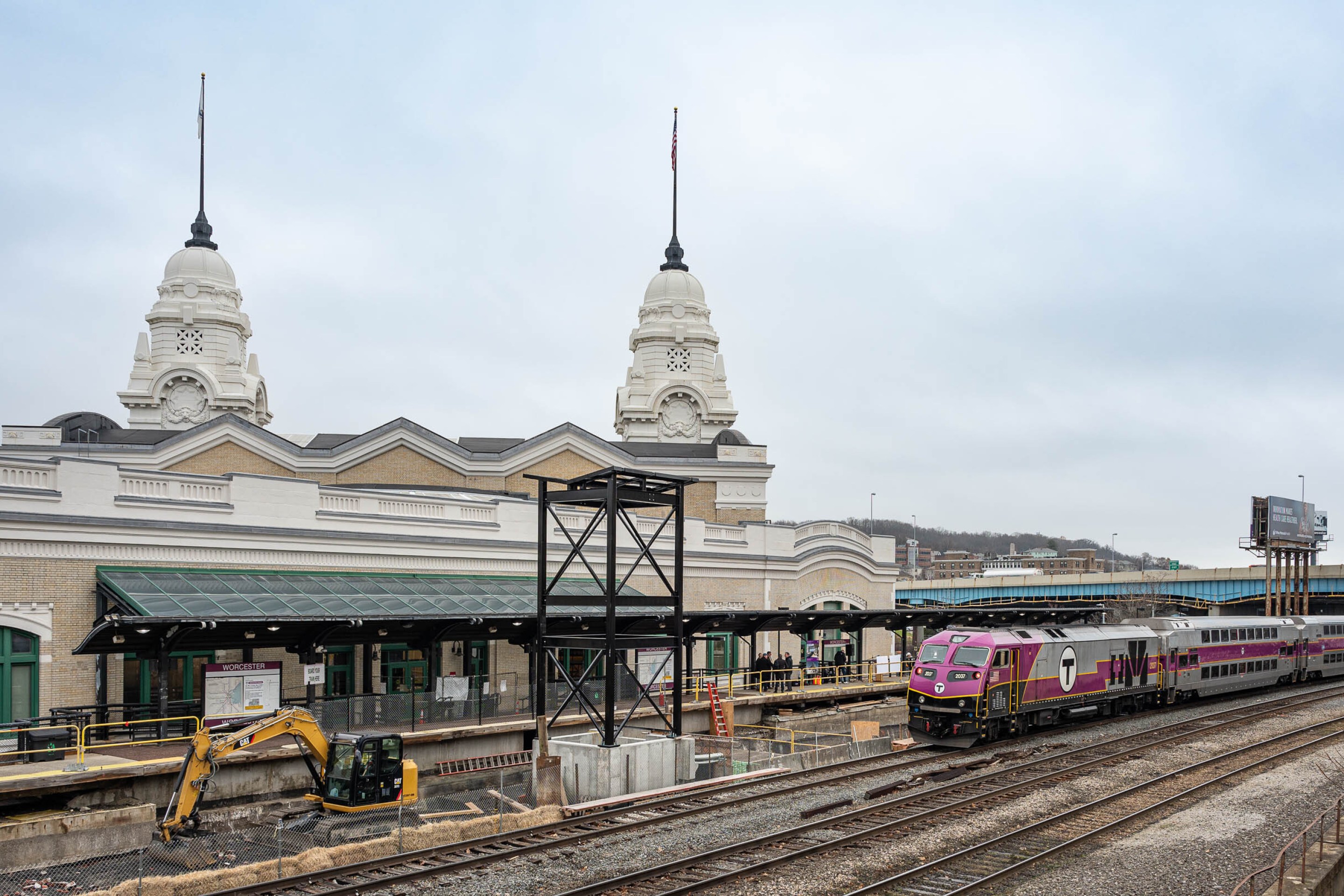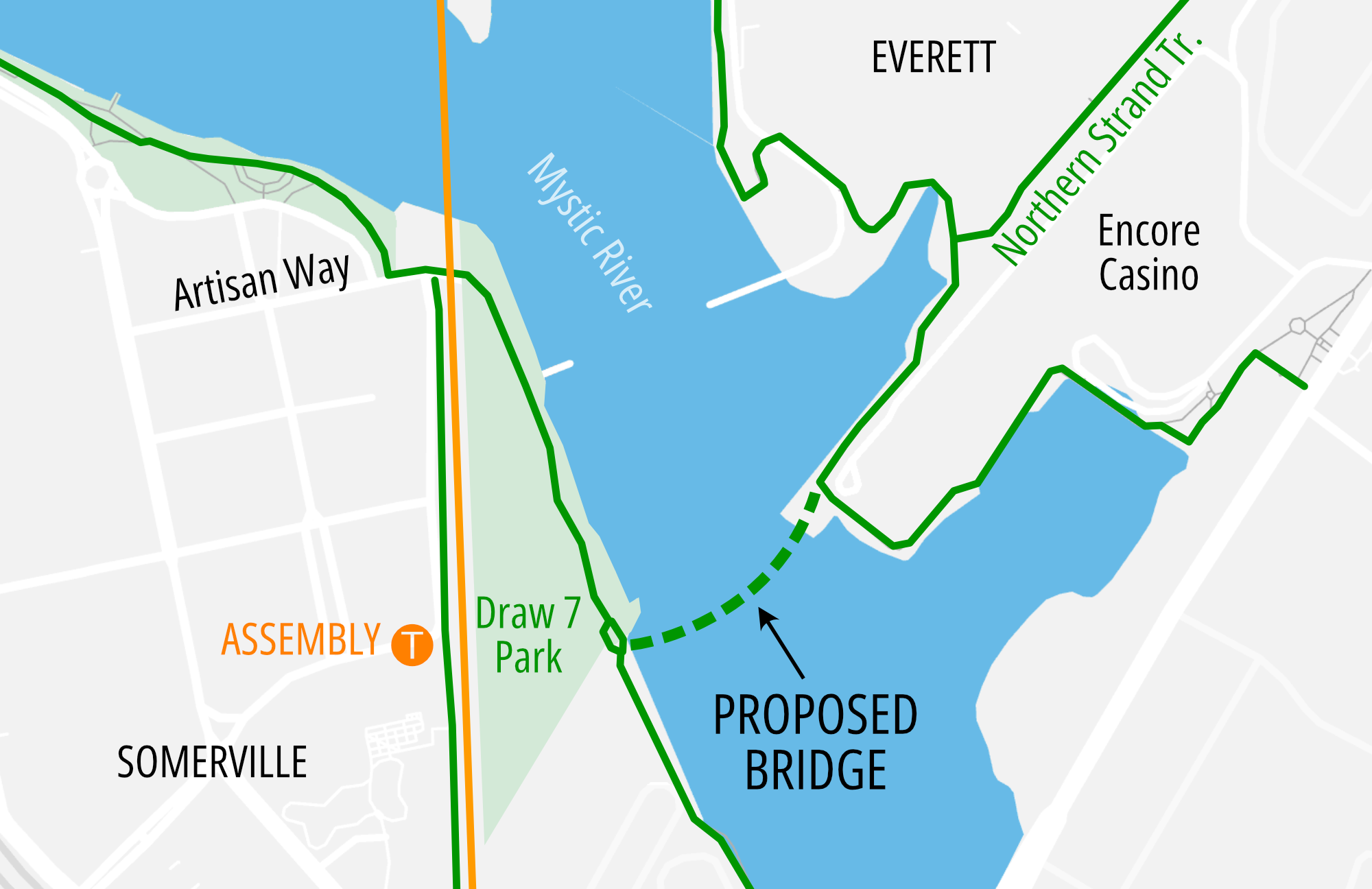MBTA Board Updates: Advocates Press for Another Tobin Bridge Bus Lane
10:42 PM EST on February 22, 2021

The new Tobin Bridge bus lane, looking towards Charlestown, in December 2020. Courtesy of the MBTA.
The MassDOT Board of Directors and the MTBA Fiscal and Management Control Board (FMCB) held a joint meeting on Monday afternoon with updates on planned transit service cuts, construction projects, and post-pandemic ridership projections. Here's our roundup:
Another Tobin Bridge Bus Lane?
During the MassDOT board meeting, a number of public commenters praised the Baker administration for the pilot bus lane from Chelsea to Boston on the Tobin Bridge, and asked MassDOT to expand on that lane's success by adding another bus lane in the northbound direction, to benefit riders who are bound for Chelsea.
In a letter submitted to state officials, representatives from six environmental and transportation advocacy groups, including GreenRoots, Transportation for Massachusetts, Conservation Law Foundation (the nonprofit fiscal sponsor of StreetsblogMASS) LivableStreets, Institute for Transportation and Development Policy (ITDP), and the Metropolitan Area Planning Commission, wrote that "a northbound Tobin Bridge bus lane could complement other improvements to northbound service for the Route 111 and other buses that cross the bridge.. it is important for MassDOT to commit to northbound improvements in addition to southbound improvements."
"For too long, this stretch of roadway has epitomized our region's most stark transit inequities, with its 2.7 mile trip from Chelsea to downtown Boston frequently taking 45 minutes or more," said Julia Wallerce, Boston Program Manager for the IDTP, during the meeting's public comment period.
More service cuts coming in March
MBTA General Manager Steve Poftak took a moment to outline the next round of service cuts, which the FMCB approved in December.
The number of daily train trips on the Red, Orange, and Green lines will go down by up to 20 percent, while service on the Blue Line (where ridership has been higher during the pandemic) will go down by 5 percent.
Meanwhile, riders of 22 bus routes will face longer waits between bus trips, and nine bus routes will no longer run at all.
The changes to the bus and subway schedules will take effect on March 14.

On the commuter rail system, a proposed new schedule will run fewer trains overall, but service would be more evenly spread out throughout the day to reflect the fact that there has been less rush-hour ridership during the pandemic.
"That allows us to operate, on a majority of the lines, a clock-face schedule – essentially on an hourly basis, there will be a train," explained Deputy General Manager Jeff Gonneville.
Gonneville reported that the changes are expected to save "$30-plus million" annually in the T's operating budget.
FMCB Chair Joe Aiello praised the changes and urged Gonneville and Poftak to "step on the gas" for additional changes in line with the "rail vision" plan that the board adopted in 2019.
"We've got to move to a more modernized regional rail system, and we've got to move fast and experiment," said Aiello.
Aiello urged the T to accelerate its plans to electrify some lines and "provide more service attractively to the people who need it, to meet their lifestyles, and get the cost point down."
The new commuter rail schedule takes effect on April 5.
New ridership projections portend a long recovery
In a presentation on recent ridership trends, Anna Gartsman, an MBTA data analyst, told the FMCB that while overall transit ridership has remained low compared to pre-pandemic numbers, "we know that ridership decline is not proportional" across demographics.
"Low-income riders remain almost twice as likely to have used the T" than higher-income groups this winter, said Gartsman. Survey data also suggest that people of color make up a higher proportion of the T's customer base now than they did before the pandemic.
The T is using these survey results to update its ridership projections for the next two years, when workplaces and college campuses are expected to reopen, albeit with higher rates of working from home.
Jen Elise Prescott, another T analyst, said that "our most optimistic scenario... assumes 90 percent of pre-COVID ridership by the end of calendar year 2022, with the return of that ridership coming quickest on buses and rapid transit, and slower on commuter rail."
Prescott said that the agency's new ridership projections would inform the T's budget and service planning processes for the upcoming fiscal year. The T typically begins its annual budget planning process in the spring.
The Transit Is Essential Coalition, a collaboration of 60 organizations that mobilized to oppose the T's service cuts earlier this winter, quickly responded with a statement that warned against further service cuts in the T's next budget.
"MBTA ridership trends and projections presented today demonstrate two things: our transit system has been a lifeline for low-income communities throughout the pandemic, and our region is on the road to recovery," according to the Coalition's statement. "We must make transit central to this recovery by continuing to invest in, improve, and expand the system... We urge the FMCB and MBTA to make service decisions that help shape a better future, and we urge the legislature to be a partner in providing the MBTA to resources they need to do so.”
Read More:
Stay in touch
Sign up for our free newsletter




